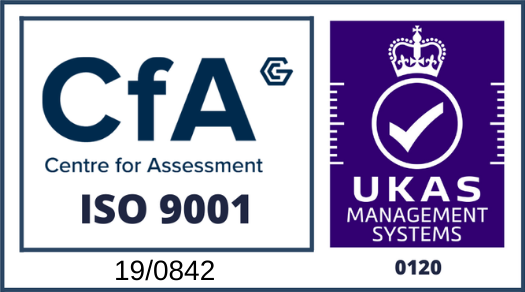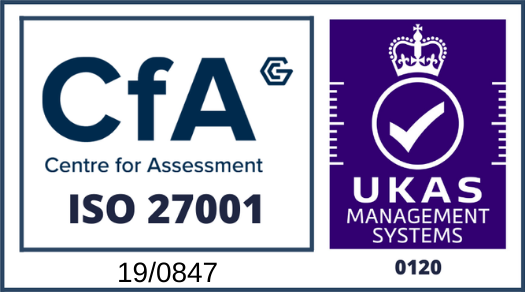People want to use accessible, intuitive technology that achieves specific results efficiently and effectively. If they can’t do what they want to do with minimal effort, then the usability has failed.
Clear, intuitive software ensures users can follow a process or complete a task with significantly less training and support than complex, convoluted systems. When users struggle with systems, they can quickly become a burden, pulling resources from other team members to support them; can create issues and errors through incorrect usage; or find a workaround outside of the system, circumventing validation and verification steps.
A McKinsey five-year study tracked companies worldwide in multiple industries and found a strong correlation between companies that have a committed focus on user design – of which usability is a key metric – and superior business performance. These companies, focused on design-led thinking, grew substantially faster than their industry counterparts over the same period, with up to 32 percentage points higher revenue growth.
Here we explore usability in more detail.
Why Should the User Be the Focus of Design?
In recent years there has been a shift in the focus of digital transformation. Implementing new technology used to be driven by saving costs and efficiencies, and technology was designed purely with this in mind.
Now, the focus has changed. Improving efficiency is still critical, but customer and employee experience has also become a priority. People have become so tech savvy, using technology every day, that they are looking for the best experience in all areas of their life too, including while at work, when doing business and while shopping.
Technology needs to be intuitive, seamless and efficient. Customers and employees have little patience now for clunky, old-fashioned interfaces or process journeys that aren’t easily understood in an instinctive, unconscious way.
How to Achieve Successful Usability
Aligning new technology to the people who will be using it is critical for a good return on investment with high adoption rates and satisfied users.
This is our usability checklist for digital transformation success:
- An iterative design & software development process that pays attention to users and their needs at each stage of the project
- An emphasis on accessibility and usability
- A focus on the end-to-end, or whole, user experience
- An approach that keeps the user in the spotlight, especially when working with complex processes. Too often, design is distracted by the functional parts, the picking apart or ‘fixing’ of complex processes, and the end-user is forgotten
Four Ways to Ensure User-Driven Design
Ensuring a user-friendly design should be a priority from the outset. Following are four ways to boost usability:
1. Get extensive feedback from end users before software development starts
Before any digital project begins, it’s critical to get detailed feedback from the end users. These are the people who will be using the technology on a day-to-day basis.
Often people say one thing, and then do another, so it’s important to analyse exactly how the end users perform tasks, where they go and in what order, what the existing bottlenecks are and what functionality they would like to see.
Gathering feedback early on will improve the usability of the technology in the long run.
Read more about bottom-up feedback in our article ‘How to deliver systems that meet employee need and business growth’.
2. Fit technology to the ability of end users and ensure tailored functionality
Using the latest features, functionality and design is not appropriate if the end users are not tech-literate. Equally, new technology that is overly basic or too simple will not appeal to highly proficient technology users.
It’s therefore important to ensure digital projects are tailored to the technological ability of the end users and that functionality is customised to them.
The user environment in which the system is going to be used should also be considered. For example, a system to complete health and safety checks on construction sites using industrial tablets will need different design considerations than a product management system that’s accessed on laptops within an office, or a CRM used by mobile sales employees.
3. Use proof of concepts and prototypes
Using proof of concepts and prototypes early on in the process validates initial visions for the new technology and demonstrates that the project is viable.
They provide visual demonstrations of workflows, generate early user feedback and ensure feasibility of high-risk technical features.
4. Take an agile iterative approach to development
An iterative approach enables the modification of new technology throughout the software development process.
A continuous feedback loop between users and developers enables the refinement of user requirements and needs, for appropriate user journeys to be clearly defined, and for workflows to be effectively mapped.
Being agile, and adapting designs during production, will deliver a fully functional user-driven application. And a flexible, responsive approach is particularly beneficial when user needs or the market changes, allowing the development to adapt as required.
Key Benefits of a Usability Approach
Approaching digital transformation with a usability approach has a number of benefits.
A usability approach:
- ensures effective adoption
- gains buy-in from customers or employees
- creates ownership as end users feel they have shaped the product
- generates fit-for-purpose user roles for streamlined productivity
- builds intuitive systems
- reduces risk of human error and workarounds in the future; technology is sustainable and longer-lasting so delivers better ROI
- increases value from digital and technology investments
Measuring Usability
Usability is not an intangible concept. The effectiveness, efficiency and satisfaction of technology can be measured, and the data analysed to quantify usability.
Measures for effectiveness can include examining the task completion rate and number of errors. Efficiency can be measured by looking at the time it takes to complete an individual task, as well as the overall time-based efficiency of completing many tasks. And satisfaction can be assessed by using satisfaction questionnaires which ask users to rate whether the task was very difficult or very easy on a scale.
This data can then be compared with previous processes or technology to quantify value, and also used when testing prototypes and during the development process.
Usability for Success
Technology projects succeed when intentionally and strategically tailored to the end-users. A focus on design-led thinking is now just as important in digital transformation as cost-savings and tangible efficiencies.
When initiating a new software project, either developed in-house, or with the help of a software development company, considering the usability of new technology from the outset, iterating as the development progresses and involving end users should help to ensure success.
To find out more about user-driven development approaches, contact us on 0113 398 4199 or at info@audacia.co.uk.


